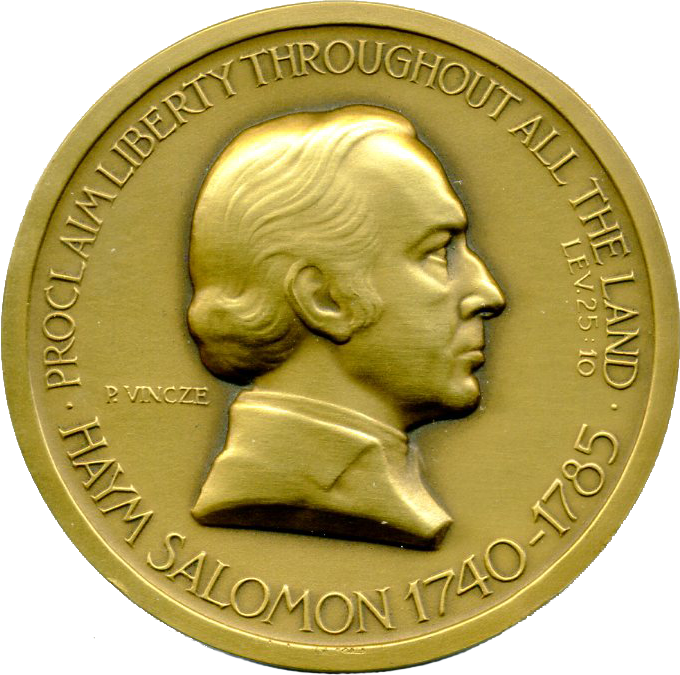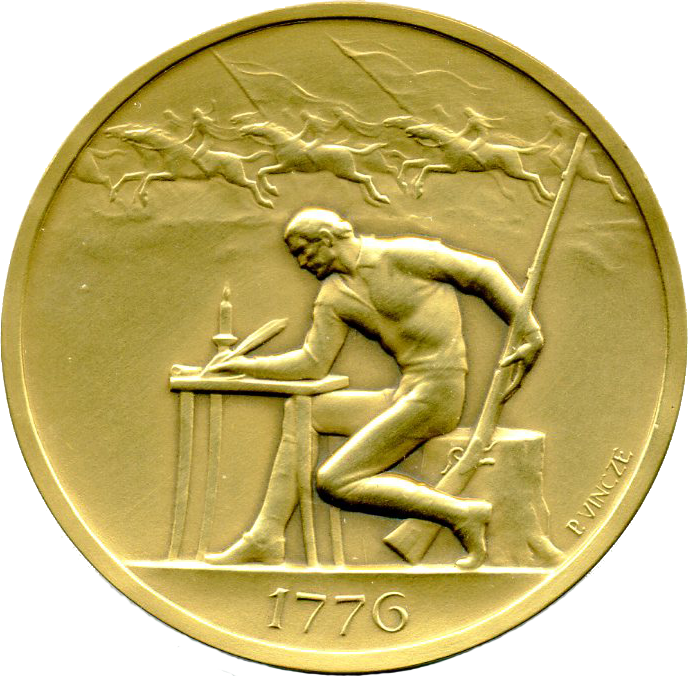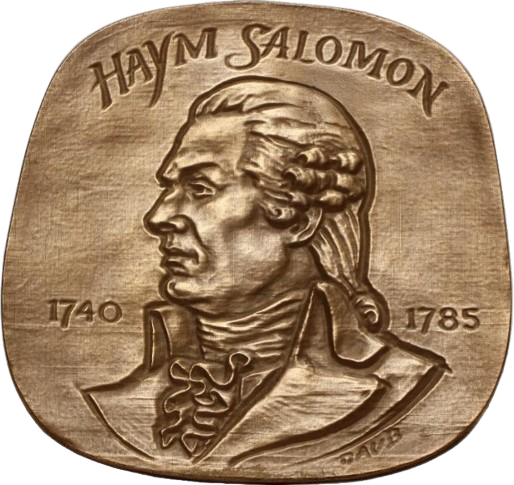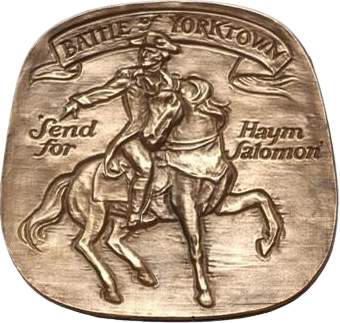 |  |
Haym Salomon medal designed by Paul Vincze, struck by Medallic Art Company in quantities of 950 bronze, 440 pure silver and about 8 gold-plated pure silver. Obverse: Portrait, PROCLAIM LIBERTY THROUGHOUT ALL THE LAND (LEV. 25:10) • HAYM SALOMON 1740-1785, P.VINCZE. Reverse: Salomon writing, with American cavalry in background, 1776 in exergue, P. VINCZE. 58 mm. Issued to commemorate America’s Bicentennial.
 |  |
Haym Salomon medal designed by Eugene Daub, cast in quantity of 76 bronze maximum. Obverse: Portrait, HAYM SALOMON, 1740 1885, DAUB.
Reverse: George Washington on horseback, BATTLE OF YORKTOWN, Send for Haym Salomon, DAUB.
88 mm. Issued to commemorate America’s Semiquincentennial.
In the early 1770’s, Haym Salomon left his family in Poland and arrived in New York on the eve of the Revolution. His command of German made him welcome to the Hessian forces, which he served as a supplier of goods. When the British suspected him of spying, Salomon was arrested and confined to prison for a time.
Salomon’s command of several languages enabled him to serve as a broker to the French officials in Philadelphia. Salomon prospered and was able to be financially helpful to a number of public figures, such as Alexander Hamilton and James Madison.
In August 1781, the Continental Army trapped Lieutenant General Charles Cornwallis in the Virginia coastal town of Yorktown. George Washington and the main army, and Count de Rochambeau with his French army, decided to march from the Hudson Highlands to Yorktown and deliver the final blow. But Washington’s war chest was completely empty, as was that of Congress. Without food, uniforms and supplies, Washington’s troops were close to mutiny.
Washington determined that he needed at least $20,000 to finance the campaign. When Morris told him there were no funds and no credit available, Washington said: “Send for Haym Salomon”. Salomon raised $20,000, through the sale of bills of exchange. With that contribution, Washington conducted the Yorktown campaign, which proved to be the final battle of the Revolution.
In 1782, Madison acknowledged the “kindness of our little friend in Front Street, whose assistance will preserve me from extremities but I never resort to it without great mortification as he obstinately rejects all recompense.”
When Haym Salomon died prematurely in January 1785, he held $353,000 — largely in depreciated certificates of indebtedness and continental currency — all virtually worthless.
The Pennsylvania Packet wrote “He was remarkable for his skill and integrity in his profession and for his generous and humane deportment.”
Haym Salomon was actively involved in Jewish community affairs. He was a member of Mikveh Israel Congregation in Philadelphia, and made the largest single contribution to the erection of its first building in 1782. The following year, Salomon joined with other prominent Jews in an address to the Pennsylvania Council of Censors, urging them to remove the religious test oath required for office holding under the State Constitution. And in 1784, he responded to a personal slander in the press by proclaiming: “I am a Jew; it is my own nation … I do not despair … that we shall obtain every other privilege that we aspire to enjoy along with our fellow-citizens.”
Bibliography: A paper by Dr. Samuel Rezneck, Professor Emeritus of History, Rensselaer Polytechnic Institute, and Wikipedia.